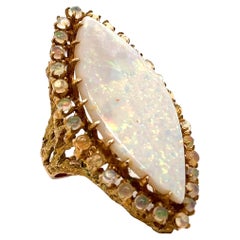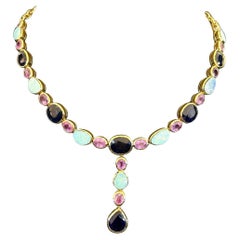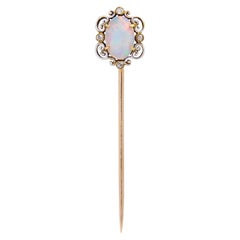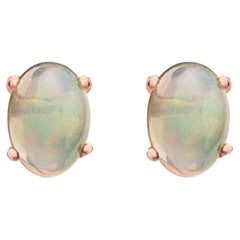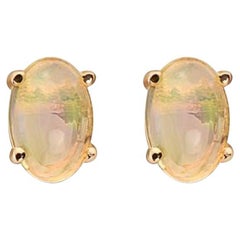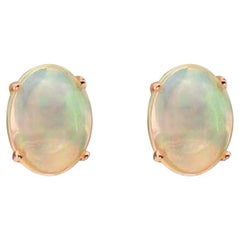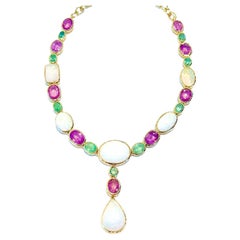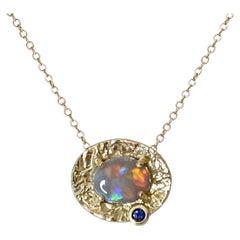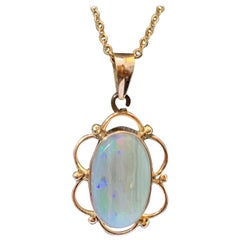Opal Set
1990s American Retro Cocktail Rings
Opal, 14k Gold, Yellow Gold
21st Century and Contemporary Thai Art Nouveau Drop Necklaces
Ruby, Opal, Sapphire, Blue Sapphire, 18k Gold, Gold Plate, Silver
Early 20th Century American Art Nouveau Brooches
Opal, Gold, 18k Gold, Yellow Gold
21st Century and Contemporary More Earrings
Gold
21st Century and Contemporary More Earrings
Gold
21st Century and Contemporary More Earrings
Gold
21st Century and Contemporary Asian Belle Époque Drop Necklaces
Emerald, Opal, Pink Sapphire, 22k Gold, Silver
2010s American Contemporary Pendant Necklaces
Opal, Blue Sapphire, Gold, 14k Gold, Yellow Gold
21st Century and Contemporary American Contemporary Pendant Necklaces
Opal, Yellow Gold
21st Century and Contemporary Contemporary Cocktail Rings
Opal, Gold, 18k Gold, Yellow Gold
21st Century and Contemporary Contemporary Cocktail Rings
Opal, Gold, 18k Gold, Yellow Gold
21st Century and Contemporary Contemporary Cocktail Rings
Opal, Gold, 18k Gold, Yellow Gold
21st Century and Contemporary Cocktail Rings
Opal, Sterling Silver
21st Century and Contemporary Contemporary Cocktail Rings
Opal, Gold, 14k Gold, Yellow Gold
21st Century and Contemporary Contemporary Cocktail Rings
Opal, Gold, 14k Gold, Yellow Gold
2010s American Contemporary Cocktail Rings
Diamond, Opal, 18k Gold
2010s Australian Pendant Necklaces
Diamond, Opal, Platinum
20th Century Cocktail Rings
Diamond, Opal
Vintage 1960s American Art Deco Dangle Earrings
Opal, Gold, 14k Gold, Yellow Gold
Late 20th Century Unknown Brooches
Opal, Ruby, 14k Gold, Yellow Gold
Mid-20th Century Retro Cocktail Rings
Diamond, Opal, 14k Gold, White Gold
2010s English Solitaire Rings
Opal, Yellow Gold
Vintage 1980s Brooches
Diamond, Opal, Gold, 14k Gold, 18k Gold, Platinum
21st Century and Contemporary Engagement Rings
Diamond, Fire Opal, 14k Gold, Rose Gold
21st Century and Contemporary Fashion Rings
Diamond, Opal, Tourmaline, White Diamond, 18k Gold, Yellow Gold
Vintage 1960s Modern Cocktail Rings
Opal, Gold, 14k Gold, Yellow Gold
Antique Early 1900s British Edwardian More Rings
Diamond, Opal, Gold
2010s Australian Pendant Necklaces
Opal, Black Opal, Gold
Vintage 1980s Unknown Pendant Necklaces
Diamond, Opal, Ruby, 18k Gold, White Gold
2010s American Contemporary Pendant Necklaces
Opal, Gold, 22k Gold, Yellow Gold
21st Century and Contemporary Thai Contemporary Fashion Rings
Opal, Gold, 18k Gold, Yellow Gold
20th Century Edwardian Brooches
Opal, 9k Gold
Vintage 1960s British Pendant Necklaces
Amethyst, Diamond, Opal, 18k Gold
2010s American Contemporary Cocktail Rings
Opal, 18k Gold
20th Century Link Bracelets
Opal, Gold, 14k Gold, Yellow Gold
Antique 1890s British Victorian Brooches
Diamond, Opal, Ruby, Gold, Silver
21st Century and Contemporary Australian Modern Pendant Necklaces
Opal, Black Opal, 18k Gold, White Gold
21st Century and Contemporary Cocktail Rings
Citrine, Diamond, Opal, Pink Sapphire, 18k Gold
21st Century and Contemporary American Contemporary Drop Earrings
Opal, Rainbow Moonstone, 18k Gold
20th Century Pendant Necklaces
Opal, Yellow Gold
21st Century and Contemporary Pendant Necklaces
Diamond, Opal, Gold, 18k Gold, Yellow Gold
21st Century and Contemporary Drop Earrings
Diamond, Opal, 14k Gold, Rose Gold
Vintage 1960s British Modern Solitaire Rings
Opal, Gold
21st Century and Contemporary Pendant Necklaces
Diamond, Opal, White Diamond, Yellow Diamond, 18k Gold, Yellow Gold
Antique 1890s Victorian Brooches
Diamond, Opal, 15k Gold, Silver
21st Century and Contemporary American Fashion Rings
Opal, 18k Gold, Yellow Gold
2010s French Art Deco Engagement Rings
Diamond, Opal, 18k Gold, White Gold
20th Century Fashion Rings
Opal, Sterling Silver
21st Century and Contemporary Indian Cluster Rings
Opal, Sterling Silver
21st Century and Contemporary Modern Dangle Earrings
Diamond, Opal, Gold, 18k Gold, White Gold
Vintage 1960s French Retro Pendant Necklaces
Fire Opal, Opal, White Diamond, Diamond, Yellow Gold, White Gold, 18k Go...
21st Century and Contemporary Modern Engagement Rings
Diamond, Opal, 14k Gold, White Gold
Late 20th Century Engagement Rings
Opal, 14k Gold, Yellow Gold
2010s Pendant Necklaces
Diamond, Onyx, Opal, Platinum
21st Century and Contemporary American Contemporary Cocktail Rings
Opal, Diamond, Yellow Gold, 14k Gold
21st Century and Contemporary Drop Necklaces
Diamond, Opal, Gold
Late 20th Century Drop Earrings
Opal, 10k Gold, 22k Gold, Yellow Gold
21st Century and Contemporary Engagement Rings
Diamond, Opal, 14k Gold, Rose Gold
- 1
- ...
